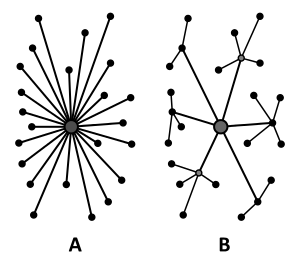With its current assets and strategy, the long term goal of Snapchat should be to build an an AR based social gaming platform.
Ever since crossing the early adopter chasm and reaching a high growth inflection point, Snapchat has been floating at the forefront of the collective conscious of both the tech savvy and tech illiterate alike. The service’s functional ambiguity as a platform leads investors to ask, “What’s the long term revenue model?”
In the early years of Facebook, many of the same questions were hurled at Mark Zuckerberg, who responded with a steadfast stance on user growth and engagement metrics, which, while common today — was an atypical business model, especially for future IPO’s.What Zuckerburg instinctively realized (that others missed) was that the Information Era had incentivized data over money. This realization marked the start of the ‘AI Arm's Race’ which we are currently witnessing today, among the tech monoliths.
What initially started as a race for basic identifying information (Name, Sex, Birthday, Interests, etc.) quickly grew into something much greater. Not only do tech monoliths want your personal information, they also desire insight into the way you make decisions, behave digitally, and travel within the physical world. In addition, marketers, psychologists, and AI programmers seek access to these large datasets in order to perform deep analysis and statistical inquiries. Thus, the long-term goals of most tech giants seem to revolve around the acquisition of data as a commodity.
In 2013, after rejecting a bid from Facebook for $3B, it quickly became clear that Snapchat had long-term interests of its own.
Let’s start by looking at a logic flow derived from the goal of data acquisition.
1. Create desirable product to “Grow User base”.
2. Leverage network effects of large user base to “drive engagement”.
3. Differentiate Snapchat from existing firms by collecting “unique data points”.
What is the unique data type which Snapchat is gathering?For starters, its first differentiating point seems to be a strong grasp of “hyper-localization” — which is accomplished by the firm through specific forms of geocaching known as “geotags”.
Another demarcating aspect of Snapchat is its focus on “filters” which have evolved over time from basic Instagram-like photo enhancers, to location (and ad-based) geotags, to, most recently, full-fledged face-altering selfie lenses which allow individuals to creatively alter their real-life appearance.

A randomly selected ‘Snapchat Selfie’
However, the real genius of Snapchat lies in the way in which it systematically mimics the way our brains process information. Late in 2013, Snapchat, having identified story-telling as a fundamental aspect of the ‘human condition’, developed and released “Stories”. Later on in 2016, Snapchat further imitated the forked timeline of human evolution by modeling its functionality on the hippocampus and allowing users the option to save important “Memories” to counter the brain’s “forget by default” setting. As Ben Basche recently stated in ‘Ghost in the Machine’,
“Snapchat is a true creature of mobile, a living, breathing embodiment of everything that our camera-enabled, networked pocket computer can possibly offer.”
Snapchat is thus unarguably ‘Mobile First’. And on top of this, we should make note that it is ‘Next-gen Hardware Second’. With this in mind, Snapchat sits only one rung up the ladder when compared to Facebook, which was originally built for desktop browser platforms and then rebuilt for mobile. As a result, Snapchat feels much more like a communicatory tool then an organized directory of information (like Facebook).
Ways in which Snapchat can be optimized:
In addition to our ability to Tell Stories and Communicate, an Anthropologist or Neuroscientist might highlight the human brain’s ability to delay gratification as an ascending quality of our species.As any person who grew up playing video games can attest to, the creation of complex reward schemes in the digital realm is a powerful incentivizer. The practice of applying game-like motivational schemes to real-world activities is a concept referred to as “Gamification”, and is a hot topic amongst PhD’s like Jane McGonagal, who wrote the NYT bestseller Reality Is Broken: Why Games Make Us Better and How They Can Change the World and Dr. Adam Gazzley, who is currently spearheading a lab at UC San Francisco to study Gamification and create ’use-case’ applications of the principle.
At its essence, the practice of Gamification requires a social component to integrate human values like competition, legitimacy, and accountability.
Social-first networks like Facebook, Twitter, and Instagram gamify their networks by equating our human need for social acceptance with a corresponding digital commodity, “Likes”. As with all good commodities, “likes” derive their value from a binary scarcity in which each user can choose to award only one like to each factor of digital content. In addition, the system is a natural outgrowth of a democratic system — where ‘every person has one vote.’
Gamification, when applied to education, results in projects like Khan Academy and Codecademy where valueless medals are incentivized and real learning becomes a beneficial externality. When applied to the “task-based economy”, gamification can be used to create incentives for Uber drivers to reallocate their time in order to perform higher demand tasks which most directly benefit the employer. An example might be a “twilight medal” bestowed to drivers who perform 10 rides between the hours of 1 to 4 am.
The fundamental accomplishment of Gamification, however, is its ability to tap into our innate need for social categorization and hierarchical structure by reviving a long-absent social chivalry code wherein specific moral values can be incentivized. Like feudalism, the incentivisation scheme works in a way that best compliments the end goals of those in charge.
Building off this analogy, in our current paradigm of gamified chivalry, the specific social networks (Snapchat, Twitter, FB, Pokemon Go) are analogous to the ‘feudal lords’ who decided on their fiefs’ social structure. Today, these entities beknight their users with marks of social position through digital indicators like the Twitter ‘verified’ blue checkmark or meaningless systems like Snapchat Trophies. In this way the place their model users “on the pedestal”.

Gotta unlock ’em all!
Decentralization and the Web 3.0
When Facebook opened up its platform to gaming in 2009, the web was in the throes of the “2.0 Revolution”, where centralized internet firms acted as a foundation for cross-platform communication and verification. Quickly, many new sites began to leverage the wealth of possibilities stemming from Facebook’s API, “Graph”. But conversely, Facebook didn’t seem to need or want to leverage 3rd Party API’s outside its own site. Thus, Web 2.0 created a scenario like this:
Centralized (A) vs. Decentralized (B) growth models
Where Facebook and Web 2.0 are Scenario A; the new generation of tech firms existing within the framework of Web 3.0 are Scenario B. Building off the theory of “Network Effect”, ‘B’ is inherently more advantageous than ‘A’, as it avoids path congestion by mimicking our neural networks.
Thus, the transformation to “Web 3.0” has rung in a new era of decentralization where top firms focus on carving a differentiated offering that fully integrates with complementary services. This Gestalt model creates a symbiotic paradigm that naturally corresponds with the “don’t repeat yourself” (DRY) principle found in Computer Science courses.
Under this 3.0 framework, each company rents itself out as a building block to developers looking to reduce task time and improve efficiency. Why build your own payment system when you can integrate with 21co, Stripe, or Paypal? From a Fintech perspective, Robinhood improves its offering by allowing for quantitative trading through Quantopian and portfolio analysis through Openfolio. In this way, complementation has replaced competition.
The evidence of this paradigm shift may best be seen through the eyes of Twilio, the biggest tech IPO of 2016. Decentralizing metapolitical forces like Brexit, the blockchain, and general cryptography provide a glimpse into what the future may hold.However the most prescient example of this shift towards a Web 3.0 may lie in Niantic’s Pokemon GO, which has created a full-fledged mobile AR-based MMO which is now posed to surpass Twitter in Daily Active Users.
Niantec spun out of Google during the Alphabet restructuring and has since developed an API [see Ingress] which was ingeniously built by incentivizing users to catalog and geocache various cultural landmarks across the globe.In this way, Pokemon Go was built by integrating the Niantec. in a way that compliments its real-world, gamified, incentive structure.

“Look guys, there’s a magikarp in our kitchen!”
While the current AR getup is intriguing, it’s clearly lacking and could easily benefit from a stronger engine. With this in mind, lets return to our examination of the Snapchat model — which seems to be compiling data related to Object (facial) Recognition within the context of AR.As Snapchat continues to experiment with AR, it is creating an opportunity to mobilize its user base in way that best leverages deep-learning algorithms to create a killer mobile AR system. This AR system, once built, could easily be outsourced to future apps like Pokemon GO in a way that is symbiotic for both parties (users could easily tell a Story about their experience becoming a Pokemon Master).
Thus, our fundamental desire for ‘play’ and ‘imagination’ would be fulfilled by Snapchat. If Snapchat accomplishes this, it would be further tapping into the fundamental attributes which constitute us as human (see Max-Neef model for reference).
- Malleable Identity (Fading Snaps, Digital Filters)
- Direct communication (Snaps, Chats)
- Storytelling & Art Creation (My Story)
- Selective Memory (Memories)
- Delayed Gratification (w/ Snap Medals tied to Identity)
If we shift our conception of what a game engine is — towards a model of “mobile-first social interaction” We can see how it would be within the best interest of Snapchat to devise a network that incentives user engagement through gamification. With this in mind, we can more fully appreciate the claim that Snapchat is, in fact, building the framework for the perfect AR gaming platform.
The “Ghost in the Machine” becomes a phantasmic apparition that half-way exists in real life, but only through the lens of the machine itself.

Will the future involve gamification?
And thus Snapchat’s long-term plan becomes clear; a bridge to facilitate a transition into AR experiences.
If Facebook bridged the divide between desktop and mobile, Snapchat will leverage user data in a way that will connect mobile to the future standard of computer hardware — whether that’s Snapchat’s internal project, the Microsoft Hololens, or something entirely different.
----
For more information on the wider industry of Financial Technology, check out Wake Fintech.
Sign up for our mailing list and follow our Medium publication at https://medium.com/wake-fintech

Snapchat has the money to do this, but the sort of technology they have been using is bought not created.